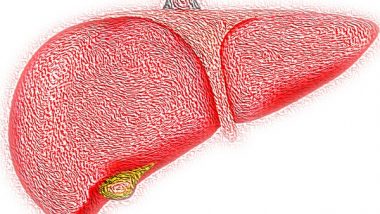Edinburgh, November 16: Although leprosy is among the oldest and most enduring diseases in the world, the bacteria that cause it may also have a surprisingly strong capacity to grow and regenerate an essential organ. The findings have been published in the journal Cell Reports Medicine.
Scientists have discovered that parasites associated with leprosy can reprogramme cells to increase the size of a liver in adult animals without causing damage, scarring or tumors. India Accounts for 60 Per Cent of World's Leprosy Patients: Japanese Philanthropist.
The findings suggest the possibility of adapting this natural process to renew ageing livers and increase healthspan -- the length of time living disease-free -- in humans.
Experts say it could also help regrow damaged livers, thereby reducing the need for transplantation, which is currently the only curative option for people with end-stage scarred livers.
Previous studies promoted the regrowth of mouse livers by generating stem cells and progenitor cells -- the step after a stem cell that can become any type of cell for a specific organ -- via an invasive technique that often resulted in scarring and tumour growth.
To overcome these harmful side-effects, Edinburgh researchers built on their previous discovery of the partial cellular reprogramming ability of the leprosy-causing bacteria, Mycobacterium leprae.
Working with the US Department of Health and Human Services in Baton Rouge, Louisiana, the team infected 57 armadillos -- a natural host of leprosy bacteria -- with the parasite and compared their livers with those of uninfected armadillos and those that were found to be resistant to infection.
They found that the infected animals developed enlarged -- yet healthy and unharmed -- livers with the same vital components, such as blood vessels, bile ducts and functional units known as lobules, as the uninfected and resistant armadillos.
The team believe the bacteria 'hijacked' the inherent regenerative ability of the liver to increase the organ's size and, therefore, to provide it with more cells within which to increase.
They also discovered several indicators that the main kinds of liver cells -- known as hepatocytes -- had reached a "rejuvenated" state in the infected armadilllos.
Livers of the infected armadillos also contained gene expression patterns -- the blueprint for building a cell -- similar to those in younger animals and human fetal livers.
Genes related to metabolism, growth and cell proliferation were activated and those linked with aging were downregulated, or suppressed. Scientists think this is because the bacteria reprogramed the liver cells, returning them to the earlier stage of progenitor cells, which in turn became new hepatocytes and grow new liver tissues.
The team are hopeful that the discovery has the potential to help develop interventions for aging and damaged livers in humans. Liver diseases currently result in two million deaths a year worldwide.
(The above story is verified and authored by ANI staff, ANI is South Asia's leading multimedia news agency with over 100 bureaus in India, South Asia and across the globe. ANI brings the latest news on Politics and Current Affairs in India & around the World, Sports, Health, Fitness, Entertainment, & News. The views appearing in the above post do not reflect the opinions of LatestLY)













 Quickly
Quickly


